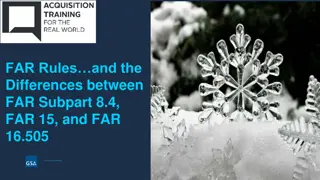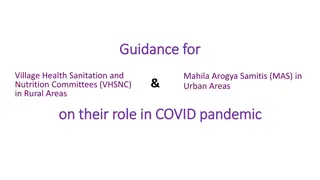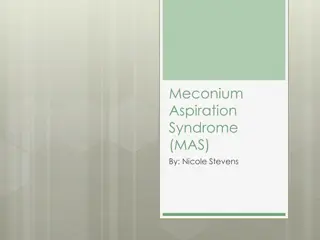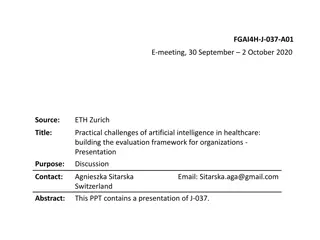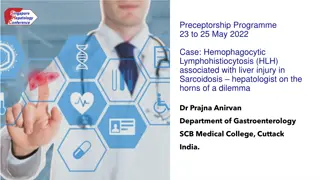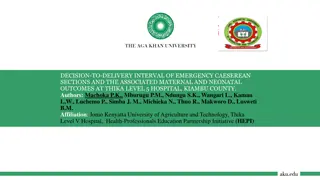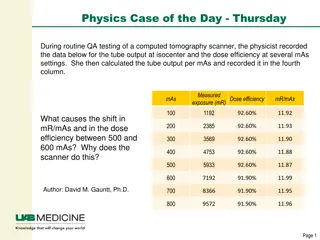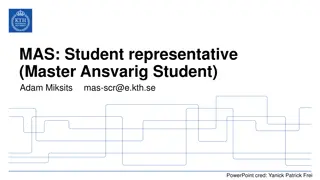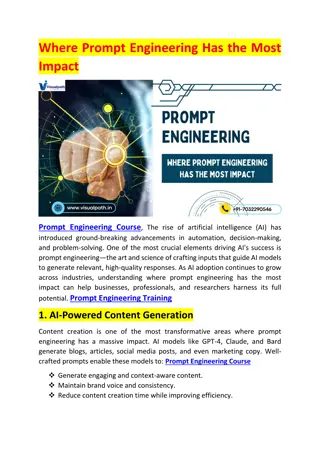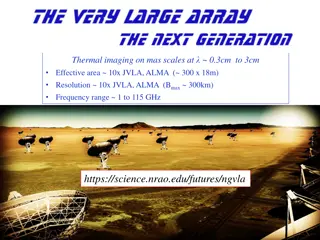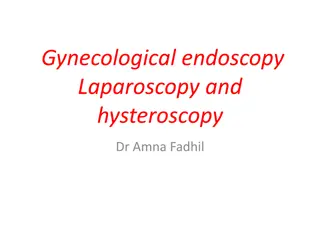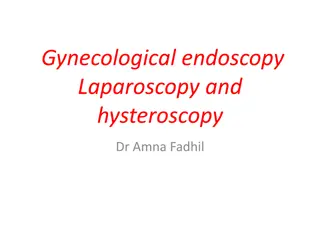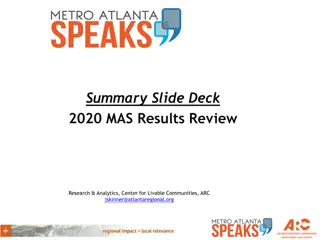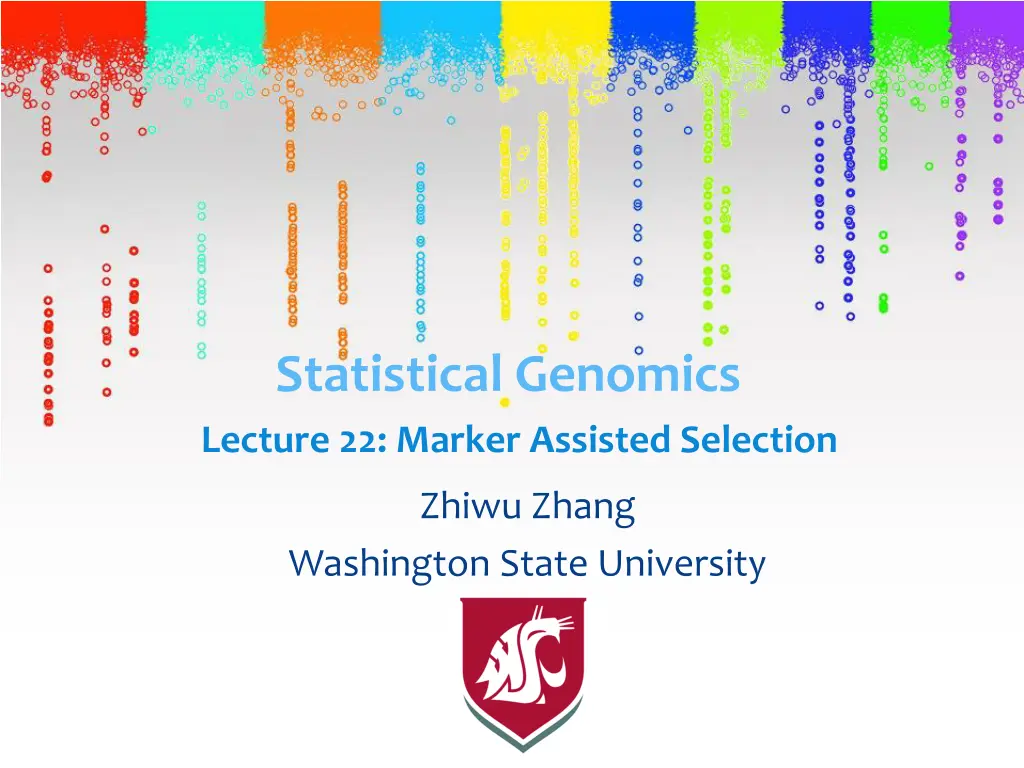
Genomic Research Insights
Explore the ultimate goal of genomic research in human disease management, treatment technologies, and agricultural advancements. Delve into the prediction of phenotypes, genetic effects, and environmental simulations in genomics.
Download Presentation

Please find below an Image/Link to download the presentation.
The content on the website is provided AS IS for your information and personal use only. It may not be sold, licensed, or shared on other websites without obtaining consent from the author. If you encounter any issues during the download, it is possible that the publisher has removed the file from their server.
You are allowed to download the files provided on this website for personal or commercial use, subject to the condition that they are used lawfully. All files are the property of their respective owners.
The content on the website is provided AS IS for your information and personal use only. It may not be sold, licensed, or shared on other websites without obtaining consent from the author.
E N D
Presentation Transcript
Statistical Genomics Lecture 22: Marker Assisted Selection Zhiwu Zhang Washington State University
Administration Homework 5, due April 13, Wednesday, 3:10PM Final exam: May 3, 120 minutes (3:10-5:10PM), 50 Department seminar (April 4) , Nural Amin
Outline Goal of genomic research phenotype vs genetic effect Environment effect Prediction by GAPIT Modeling MAS
Ultimate goal of genomic research Human Management of disease risk through prediction Treatment through technologies, such as gene editing, and post-transcriptional gene silencing (PTGS) Crops and animals More choice such as selection
Human vs. Animal/Crop Characteristic Human Crop/Animal Diversity big bigger/smaller LD decade fast faster/slower Environmental control No Yes Selection NA intensive h2 low high Data collection network experiments
Prediction of phenotype vs. genetic Characteristic Phenotype Genetic effect Risk management Human Treatment Animal/crop Production Breeding
Simulation of environment effects Examples: Nursery of maize 282 association panel Tropical lines: planting one week earlier Stiff Stalk lines: removing tillers
mdp_env.txt Taxa 33-16 38-11 4226 4722 A188 A214N A239 A272 A441-5 A554 A556 A6 A619 A632 SS NSS 0.972 0.993 0.917 0.854 0.982 0.017 0.963 0.122 0.531 0.979 0.994 0.03 0.99 0.004 Tropical 0.014 0.004 0.012 0.111 0.005 0.221 0.002 0.859 0.464 0.002 0.002 0.967 0.001 0.003 Early 0 0 0 0 0 0 0 1 0 0 0 1 0 0 Tiller 0 0 0 0 0 1 0 0 0 0 0 0 0 1 0.014 0.003 0.071 0.035 0.013 0.762 0.035 0.019 0.005 0.019 0.004 0.003 0.009 0.993
GAPIT.Phenotype.Simulation function(GD, GM=NULL, h2=.75, NQTN=10, QTNDist="normal", effectunit=1, category=1, r=0.25, CV, cveff=NULL){ , environment component,... })
Environment component vy=effectvar+residualvar ev=cveff*vy/(1-cveff) ec=sqrt(ev)/sqrt(diag(var(CV[,-1]))) enveff=as.matrix(myCV[,-1])%*%ec
Prediction with GAPIT QTN GWAS h2: optimum heritability Pred compression kinship.optimum: group kinship kinship: individual kinship PCA SUPER_GD P: single column with order same as marker
GWAS $ GWAS ..$ SNP ..$ Chromosome ..$ Position ..$ P.value ..$ maf ..$ nobs ..$ Rsquare.of.Model.without.SNP: num [1:3093] 0.94 0.94 0.94 0.94 0.94 ... ..$ Rsquare.of.Model.with.SNP : num [1:3093] 0.949 0.946 0.945 0.944 0.943 ... ..$ FDR_Adjusted_P-values : num [1:3093] 1.70e-06 6.28e-04 2.25e-03... :'data.frame': 3093 obs. of 9 variables: : Factor w/ 3093 levels "abph1.1","abph1.10",..: 3040 2759 1036 635 ... : int [1:3093] 1 3 3 1 5 2 2 2 4 2 ... : int [1:3093] 23267335 161573186 66922282 280215046 274038 ... : num [1:3093] 5.49e-10 4.06e-07 2.19e-06 3.86e-05 2.28e-04 ... : num [1:3093] 0.4342 0.0516 0.1975 0.121 0.3149 ... : int [1:3093] 281 281 281 281 281 281 281 281 281 281 ...
Pred $ Pred :'data.frame': ..$ Taxa : Factor w/ 281 levels "33-16","38-11",..: 1 2 3 4 5 6 7 8 9 10 ... ..$ Group : Factor w/ 8 levels "1","2","3","4",..: 1 1 1 2 1 3 1 4 4 1 ... ..$ RefInf : Factor w/ 1 level "1": 1 1 1 1 1 1 1 1 1 1 ... ..$ ID : Factor w/ 8 levels "1","2","3","4",..: 1 1 1 2 1 3 1 4 4 1 ... ..$ BLUP : num [1:281] -0.000026 -0.000026 -0.000026 -0.000186 -0.000026 ... ..$ PEV : num [1:281] 0.044321 0.044321 0.044321 0.000473 0.044321 ... ..$ BLUE : num [1:281] -6.27 -6.45 -6.41 -6.33 -6.34 ... ..$ Prediction: num [1:281] -6.27 -6.45 -6.41 -6.33 -6.35 ... 281 obs. of 8 variables:
compression $ compression :'data.frame': ..$ Type : Factor w/ 1 level "Mean": 1 1 1 1 1 1 1 1 1 ..$ Cluster : Factor w/ 1 level "average": 1 1 1 1 1 1 1 1 1 ..$ Group : Factor w/ 9 levels "201","211","221",..: 4 6 7 5 8 9 3 1 2 ..$ REML : Factor w/ 9 levels "1321.08741895689",..: 1 2 3 4 5 6 7 8 9 ..$ VA : Factor w/ 9 levels "1.48175729001834",..: 4 8 9 5 7 6 3 2 1 ..$ VE : Factor w/ 9 levels "3.45321254077243",..: 6 4 1 5 3 2 7 9 8 ..$ Heritability: Factor w/ 9 levels "0.215095983050654",..: 4 8 9 5 7 6 3 2 1 9 obs. of 7 variables:
Prediction modeling Model Phenotype genetic value y=PC + e y=C1 + + C10 + e y=C1 + + C10 + PC + e y=C1 + + C10 + PC+ ENV+ e y=C1 + + C200 + PC + ENV + e
Setup GAPIT #source("http://www.bioconductor.org/biocLite.R") #biocLite("multtest") #install.packages("gplots") #install.packages("scatterplot3d")#The downloaded link at: http://cran.r- project.org/package=scatterplot3d library('MASS') # required for ginv library(multtest) library(gplots) library(compiler) #required for cmpfun library("scatterplot3d") source("http://www.zzlab.net/GAPIT/emma.txt") source("http://www.zzlab.net/GAPIT/gapit_functions.txt")
Import data and simulate phenotype myGD=read.table(file="http://zzlab.net/GAPIT/data/mdp_numeric.txt",head=T) myGM=read.table(file="http://zzlab.net/GAPIT/data/mdp_SNP_information.txt",head=T) myCV=read.table(file="http://zzlab.net/GAPIT/data/mdp_env.txt",head=T) #Simultate 10 QTN on the first half chromosomes X=myGD[,-1] index1to5=myGM[,2]<6 X1to5 = X[,index1to5] taxa=myGD[,1] set.seed(99164) GD.candidate=cbind(taxa,X1to5) source("~/Dropbox/GAPIT/Functions/GAPIT.Phenotype.Simulation.R") mySim=GAPIT.Phenotype.Simulation(GD=GD.candidate,GM=myGM[index1to5,],h2=.5,NQ TN=10, effectunit =.95,QTNDist="normal",CV=myCV,cveff=c(.51,.51)) setwd("~/Desktop/temp")
Prediction with PC and ENV R square=0.66245823745266 10 5 myGAPIT <- GAPIT( Y=mySim$Y, GD=myGD, GM=myGM, PCA.total=3, CV=myCV, group.from=1, group.to=1, group.by=10, QTN.position=mySim$QTN.position, #SNP.test=FALSE, memo="GLM",) ry2=cor(myGAPIT$Pred[,8],mySim$Y[,2])^2 ru2=cor(myGAPIT$Pred[,8],mySim$u)^2 par(mfrow=c(2,1), mar = c(3,4,1,1)) plot(myGAPIT$Pred[,8],mySim$Y[,2]) mtext(paste("R square=",ry2,sep=""), side = 3) plot(myGAPIT$Pred[,8],mySim$u) mtext(paste("R square=",ru2,sep=""), side = 3) mySim$Y[, 2] 0 -5 -10 -15 -8 -6 -4 -2 0 2 4 R square=0.0214198362063903 0 -2 mySim$u -4 -6 -8 -10 -8 -6 -4 -2 0 2 4
Prediction with top ten SNPs R square=0.813735024203838 10 ntop=10 index=order(myGAPIT$P) top=index[1:ntop] myQTN=cbind(myGAPIT$PCA[,1:4], myCV[,2:3],myGD[,c(top+1)]) 5 mySim$Y[, 2] 0 -5 -10 -15 myGAPIT2<- GAPIT( Y=mySim$Y, GD=myGD, GM=myGM, #PCA.total=3, CV=myQTN, group.from=1, group.to=1, group.by=10, QTN.position=mySim$QTN.position, SNP.test=FALSE, memo="GLM+QTN", ) -10 -5 0 5 R square=0.185090090074047 0 -2 mySim$u -4 -6 -8 -10 -10 -5 0 5
Prediction with top 200SNPs R square=0.94300576514178 10 ntop=200 index=order(myGAPIT$P) top=index[1:ntop] myQTN=cbind(myGAPIT$PCA[,1:4], myCV[,2:3],myGD[,c(top+1)]) 5 mySim$Y[, 2] 0 -5 -10 -15 myGAPIT2<- GAPIT( Y=mySim$Y, GD=myGD, GM=myGM, #PCA.total=3, CV=myQTN, group.from=1, group.to=1, group.by=10, QTN.position=mySim$QTN.position, SNP.test=FALSE, memo="GLM+QTN", ) -15 -10 -5 0 5 10 R square=0.171036001292668 0 -2 mySim$u -4 -6 -8 -10 -15 -10 -5 0 5 10
Outline Goal of genomic research phenotype vs genetic effect Environment effect Prediction by GAPIT Modeling MAS



